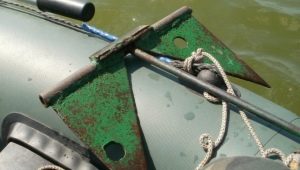PVC boat trailers: types, selection and application
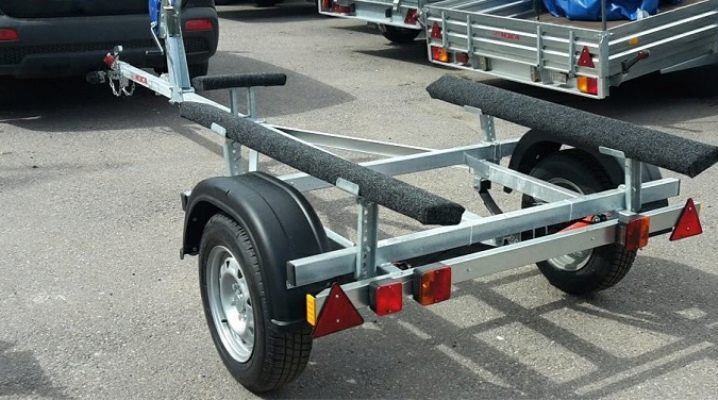
Absolutely every owner of an ordinary inflatable boat, no matter who he is - a hunter, fisherman or an ordinary traveler-tourist - at least once encountered some difficulties in transporting it. A PVC boat trailer can help with this.

Description and purpose
Especially often various problems arise if the boat is equipped with additional equipment and a motor. Of course, the boat can be transported using an ordinary car, but often this is not the most profitable and convenient option. For example, if the boat is pre-inflated and the motor is already attached to it, you will not be able to comfortably carry it in a passenger car (it will take up the entire luggage compartment and passenger seats). Just to avoid these inconveniences and quickly solve all the difficulties, special carts for transporting PVC boats were invented.
Trailers for transporting PVC or rubber boats are special designs that allow you to transport your boat in a short time and without any problems.

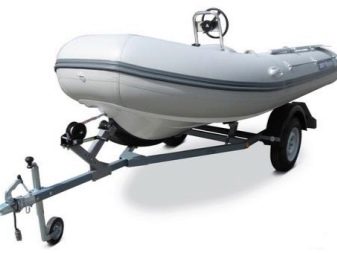
Varieties of designs
On sale you can find 2 types of carts. The first type is an ordinary cargo trailer. These carts will allow you to attach your boat to them and take it to the fishing spot or any other destination. A significant disadvantage of this type is that you will need helpers to load your boat onto a trolley.
And also there are difficulties already when lowering the boat from the cart: you must first remove it (most often not without assistance), and only then float it into the water.
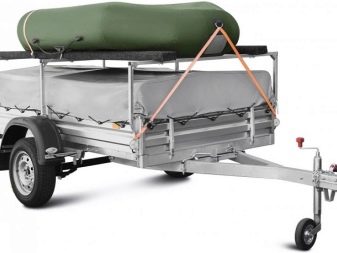

In turn, this type is divided into 2 subgroups.
- For the transport of flat-bottomed boats - with a flat bottom (inconvenient because you will not be able to transport boats with a keel).
- For transportation of any types of boats – with frame. The designs of these trailers include special under-keel recesses for ease of transportation. Often the structures are collapsible.
Such trailers are “contraindicated” for the elderly, lone fishermen, as well as people who are not particularly physically fit, because for these categories of people the operation of such carts will be either incredibly difficult or impossible. They should pay attention to the second type.
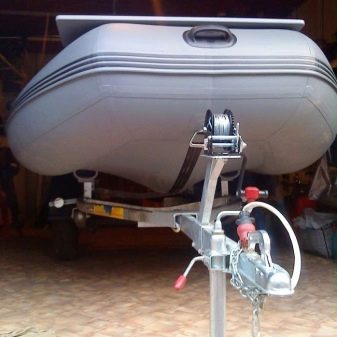
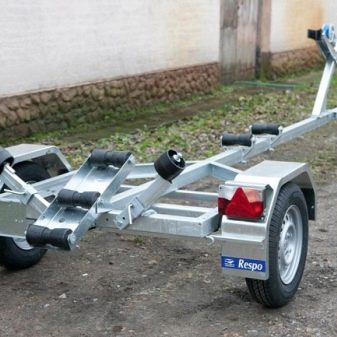
The second type is special construction trailers equipped with special cradles. They, in turn, are two pipes installed longitudinally. Such trailers are used to transport not only boats, but also boats, catamarans. The undoubted advantage that distinguishes this type from the previous one is that boats can be launched from these trailers directly into the water.
Usually such trailers are foldable, which will allow you to store it compactly in your garage. And also they are very light and will allow even an elderly person to cope with transportation.
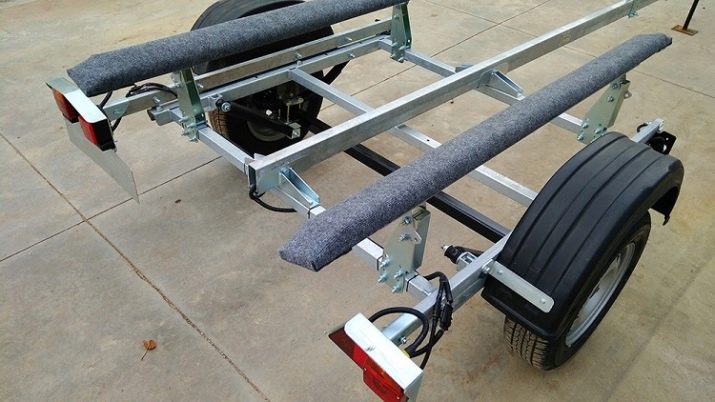
It is also divided into 2 subgroups.
- uniaxial. Such structures are much cheaper, but it will be much more difficult for you to transport boats on them. Problems while driving with it can arise even due to the slightest turns. Another serious disadvantage is that such trailers are not universal. You will have to select the exact dimensions for your boat in order to transport your boats more or less normally.
- Biaxial. These trailers can be found already at a higher price, but they are much better balanced. Good balance allows you to achieve high maneuverability and cross-country ability even at a relatively high speed of movement. Their advantages include the ability to transport motor boats, a higher carrying capacity.
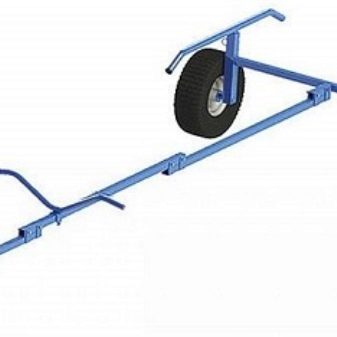
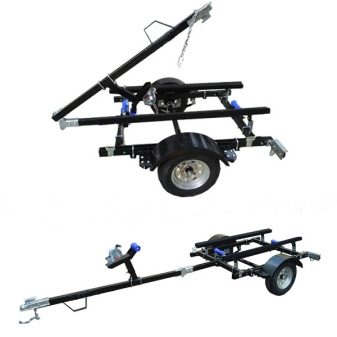
Boat trailers cannot be classified on the basis of "professionalism", however, experienced people are more likely to choose double-axle carts because of their convenience and ability to be dismantled. All these factors make comfortable not only the transportation of the craft, but even the trolley itself.
MZSA is considered one of the best companies on the market. It produces not only boat carts, but also conventional car trailers, as well as flatbed ones. Professionals often choose this product, as it is famous for its high quality.
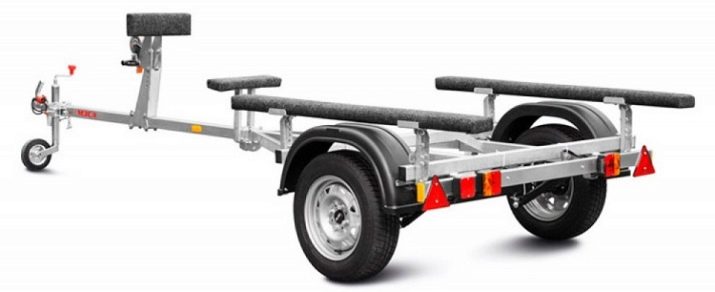
How to choose?
As with choosing any other product, you must understand what you want to see as a trailer. For ordinary inflatable boats, ordinary cargo trailers are quite suitable. If you own a motorboat (whether with or without a keel), don't even look in the direction of single-axle bogies. Only biaxial will suit you. Yes, they will be more expensive, but you will experience many times less problems during transportation.
The price of the issue of convenience will depend not only on the above factors, but also on:
- dimensions (depend solely on the size of your boat);
- trailer load capacity (also depends on the weight of your boat);
- the quality of the materials from which the trolley is made;
- type of boat.
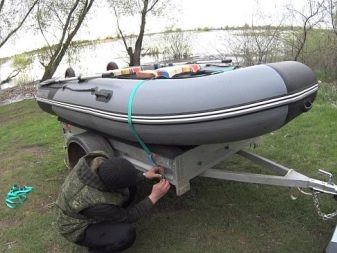
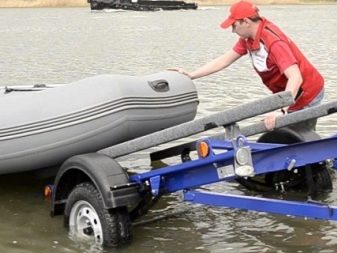
One of the main mistakes newbies make when shopping for carts is that they are careless about measuring the dimensions of their floatation equipment. In no case can such measurements be carried out by eye, because a cart model that is average in terms of characteristics and price costs about 40,000 rubles. Carry out all measurements and weighings carefully so as not to waste money.
Do not forget about the quality of the materials from which the trailer is made. Decide how often you will use it. If this is at least once a week, in no case try to save on quality. Will not work. With frequent use, a trolley made of cheap materials will deteriorate in a few months from constant loads.
If for you the transportation of a boat is a rarity (once a month or less), then you can safely take goods from cheaper raw materials.

If you are the owner of a boat with a keel, then be sure to see that in your wheelbarrow the keel notch is 1.2-1.3 times larger than the size of the keel itself. This will provide protection from damage. When choosing, do not forget to take into account your personal physical capabilities. If you want to carry out a minimum of manipulations with the transportation of a watercraft to different places, trailers with lodgements should be your choice.
If you want to keep in good condition not only your watercraft, but also the trolley for transporting it, then make sure that it comes with a special case. Such a cover, of course, will not protect the trailer from accidents or any serious damage, but it will help you keep the cart clean and beautiful.

It is important when choosing a trolley for a watercraft, its type itself. If you have an ordinary rubber boat (without a motor), a single-axle trolley will be enough for you. After all, simple rubber boats cannot create a strong load even on one axle, therefore, you will not experience difficulties during transportation.
If you have a boat (or boat) with a motor or made of durable materials (wood, special plastic), a single-axle cart is unlikely to suit you. The fact is that such boats have an order of magnitude higher weight than rubber ones, which means that they will give more axle load. When there are two axles, they will withstand this load with ease, and you will not experience any problems during operation.
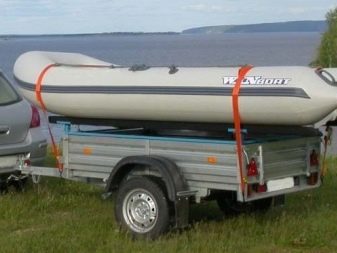
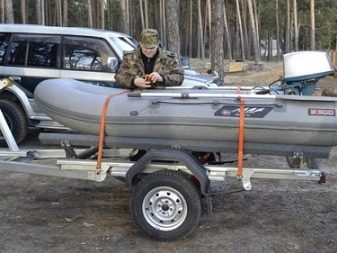
Do I need to register?
Don't forget that trailer is a vehicle. After choosing and purchasing you need to register it.
Like any other vehicle, carts for transporting PVC boats are registered with the traffic police. No more than 10 days must pass from the moment of purchase of the trailer to its registration. If the total mass of the boat (or your boat) and the cart is more than 0.7 tons, then you will need the appropriate driver's category.

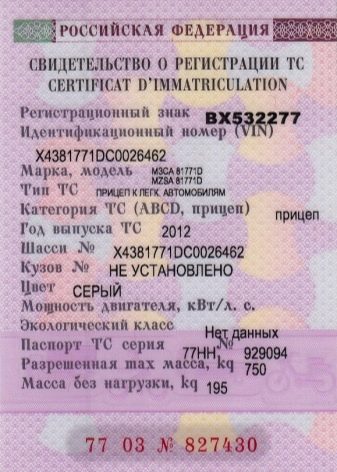
In order to register a trailer, you will need the following documents:
- Your passport;
- contract for the sale of your trolley;
- PTS;
- a paper or electronic receipt confirming your payment of the state duty for the issuance of a registration certificate;
- application for registration from the owner of the documents for the trailer;
- trailer transit numbers.
For those drivers who have category B rights, there is no need to take out OSAGO insurance. If your cart was made by you yourself (or by a custom-made master, but not at the factory), then it must also be registered. Otherwise, your cart may be taken to the impound lot, and you may receive a fine.

Boat mount
Step-by-step instruction:
- loosen the clamps holding the drawbar;
- lift the body of the trailer up and secure it in this position with the leg;
- lift the boat engine up (if it has one) so that it does not stick into the ground;
- pull the craft up to half the length of the skids;
- attach the winch to the drawbar, and lower the stocks;
- tighten with a winch and lift the boat onto the lodgements;
- raise the stocks;
- carefully tighten all the clamps to the desired level, and then lower the engine down;
- fasten the front of the watercraft to the drawbar (use a coupler);
- attach the boat to the trailer with clamps, passing them through the cylinders.
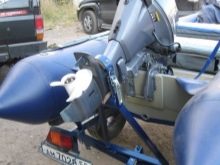
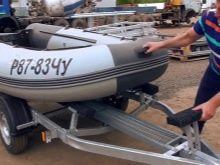

Subtleties of transportation
Now let's look at how to properly carry a boat. Securing the boat is not the only thing you need to be able to do. Properly transporting a watercraft is also a science. Beginners tend to make mistakes, so in order to avoid all possible troubles during the purchase and after it, just follow all the tips below:
- to prevent the boat from sliding towards the engine during braking, thread another tie between the drawbar and the eye;
- attach the leg of the engine with a coupler to the frame of the trailer platform;
- use an awning to increase the protection of your boat from the weather, road debris during transportation;
- do not accelerate, but rather do not choose roads with poor coverage or holes;
- check the clamps and ties for strength before each trip;
- do not brake sharply while driving with a trailer in which there is already a boat;
- always remember that you are driving with a boat trailer - your maneuverability is reduced by its presence.

That's all the basic tips that will help you transport your watercraft without loss, even if you have absolutely no experience in this matter.
How to make a PVC boat trailer with your own hands, see the following video.






















